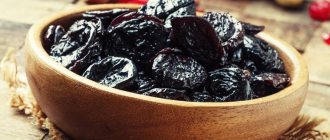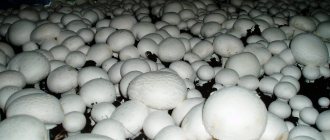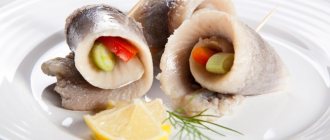The edible part of the mussel (the orange-most shell-shaped surface) is a muscle. The taste of seafood is ambiguous: it varies from sweet to salty and with every movement of the jaw it produces new and new combinations. Mussels are eaten in all sorts of states, from raw to dried or canned.
Seafood is also served in radically different locations: in Michelin-starred restaurants and on beaches in rural areas. What is the ingredient and what real benefit or pleasure can it bring to a person?
General characteristics of the product
Mussels belong to the genus of marine bivalve mollusks of the Mytilidae family. Representatives of mussels that humanity eats live mainly in the Atlantic and Pacific oceans. Mollusks especially liked the littoral zone (tidal zone with stones or sand) and the upper sublittoral zone. It is from there that fishermen catch them and put them on land for sale.
Content:
- General characteristics of the product
- Ecological Features
- Brief historical background
- Useful properties of the ingredient
- Chemical composition of seafood
- Use of the ingredient in cooking
- How to choose the right mussels
The mussel looks like two connected oblong shells. The outer surface of this shell is painted in a dark range of colors: from olive to purple, turning into black. The dark palette is diluted with minor light splashes and stripes. Average dimensions: 8 centimeters long and 4 centimeters high.
Edible mussels have one significant difference from other varieties of shellfish. The crown and anterior edge of the edible animal are aligned, while in other species they are shifted.
The triangular-oblong shape of the shells hides a strong muscle inside - the only organ of the animal that we eat. The surface of the shell is smooth and shiny; with age, it becomes overgrown with other marine inhabitants: sponges, bryozoans, balanuses and hydroiodes. They destroy the surface and lead to the destruction of the animal. The inner shell flaps are perfectly smooth (so as not to damage the muscle) with a mother-of-pearl tint.
Description
Mussels are a seafood belonging to the Mytilidae family. The size of freshwater and marine mollusks can range from small to large. The color and shape of the shell varies depending on the type of mussel, but both sides of the shell are approximately the same in size. Mussels can either be cooked as a stand-alone snack or used as an additional ingredient to form first and second courses. Shellfish can be eaten boiled, fried, baked and pickled. Before cooking, the shells must be properly cleaned of dirt and algae.
Ecological Features
All littoral organisms are adapted to unfavorable environmental conditions, otherwise they simply would not survive through natural selection. At low tide, the mussel tightly closes the valves of its shell. A certain amount of sea water gets inside. The liquid enters the mantle plane and from there the mollusk scoops it up to maintain its vital functions. Sea water reserves last for several days.
The tide manages to change the ebb, and the mussel opens its doors again and returns to its usual daily routine. Animals are also able to withstand sharp temperature fluctuations (both daily and seasonal).
Damage to mussels
The main danger of mussels is water filtration and retention of all harmful impurities.
One mussel can pass up to 80 liters of water through itself, and the poison saxitoxin gradually accumulates in it. A large number of shellfish collected in contaminated water can harm the body. Raw shellfish are more dangerous, including due to possible parasites.
When mussels are digested, uric acid is formed, which is dangerous for gout patients. Many people are allergic to this seafood; you need to get it checked before consuming it.
Brief historical background
Mussels were present in the diet of the ancient Romans (about 70 thousand years ago). Catch and artificial breeding began in the 13th century in Ireland. Several centuries later, production reached an industrial scale: entire farms were created for growing seafood, export supplies were established, strong trade relations were established, and new varieties of mussels began to be developed. Today, the leading countries of the world are engaged in industrial cultivation of mussels: Australia, China, Spain, Scotland, Japan, Belgium, France, Chile.
The population of Belgium loved the seafood delicacy so much that the locals decided to organize a mussel festival. It is held annually at the end of August. All thematic establishments of the country and coastal areas are filled with celebration, dishes and clients.
Useful properties of the ingredient
Selenium
Selenium (Se) is one of the most important components of hormones. These hormones work tirelessly every day to ensure that a person feels good and is able to experience happiness. The element helps the body absorb iodine better, faster and more efficiently. This, in turn, guarantees the health of the thyroid gland, the main hormone-producing organ.
Selenium helps strengthen the protective function of the immune system and protects us from pathogenic microflora. Scientists have found that the element can prevent the development of herpes. If the HPV virus has already settled in the body, then selenium minimizes its manifestations and reduces exacerbations of herpes to zero.
Doctors point out the importance of consuming products with selenium after long-term therapy with “heavy” medications. The element will restore liver cells, improve mineral metabolism, and prevent the development of stones. Therefore, in addition to traditional probiotics, also pay attention to seafood.
The benefits of selenium are most noticeable for women during pregnancy. The element reduces the duration and severity of toxicosis. Instead of languishing from toxicosis, organize an evening at a specialized fish restaurant. In addition, such an event will also cause emotional release. In addition to reducing toxicosis, selenium promotes normal intrauterine development of the fetus and significantly improves the well-being and appearance of the mother.
Men should also pay attention to mussels. Selenium helps balance male hormonal levels. Androgens and testosterone bring not only unshakable confidence, but also increased libido.
Sodium
Sodium (Na) is the main ion in human blood. In addition, the element supports the health of the muscle corset, the functionality of nervous activity, and the equal distribution of fluid throughout the body. Sodium is also responsible for the transport function within the human body.
In the process of evolution, humans consumed little sodium and our body resorted to a little trick. Even minimal intake of sodium into the body leads to its supply and accumulation. The body specifically holds the element and uses it very carefully.
Modern man is no longer afraid of sodium deficiency. Only 100 grams of mussels contain 280 milligrams of the element. Now humanity suffers from an excess of the component:
- swelling;
- hypertension;
- kidney diseases.
To avoid going overboard with sodium, watch your own diet. The main sodium blocker, potassium, should always be in your menu and balance the balance of forces. Don't forget about the dosage of seafood. Allow yourself 2-3 fish meals a week to nourish your body with nutrients and minimize possible risks.
Protein
100 grams of mussels contain about 15 grams of protein. Moreover, protein from seafood is absorbed much faster and easier than animal protein from beef. Mussel meat is much easier to digest, does not cause heaviness in the stomach and eliminates abdominal pain, nausea, vomiting, and heartburn.
Vitamins and fatty acids
The benefits of vitamins and fatty acids are:
- improving skin condition;
- slowing down the aging process;
- release of free radicals;
- formation of a strong and beautiful nail plate and hair follicle;
- regeneration of the body.
Chemical composition of seafood
Nutritional value (per 100 grams of raw product)
| Calorie content | 77 kcal |
| Squirrels | 11.5 g |
| Fats | 2 g |
| Carbohydrates | 3.3 g |
| Alimentary fiber | 0 g |
| Water | 82 g |
| Ash | 1.6 g |
Vitamin composition (in milligrams per 100 grams of raw product)
| Retinol (A) | 0,06 |
| Thiamine (B1) | 0,1 |
| Riboflavin (B2) | 0,14 |
| Ascorbic acid (C) | 1 |
| Tocopherol (E) | 0,9 |
| Nicotinic acid (PP) | 3,7 |
Nutrient balance (in milligrams per 100 grams of raw product)
| Macronutrients | |
| Potassium (K) | 310 |
| Calcium (Ca) | 50 |
| Magnesium (Mg) | 30 |
| Sodium (Na) | 290 |
| Sulfur (S) | 115 |
| Phosphorus (P) | 210 |
| Microelements | |
| Iron (Fe) | 0,0032 |
Use of the ingredient in cooking
Mussel meat (represents a muscle) is very tender and soft. The taste is vaguely reminiscent of the white of a chicken or quail egg with a richer and more harmonious taste. The culinary palette of seafood consists of a viscous, sweetish taste, which is replaced by a pleasant marine note.
Only tightly closed mussels are used for food. The sashes must be smooth and complete. Even with the slightest damage, the mollusk becomes unfit for consumption.
Most often, shellfish are boiled or baked. Heat treatment helps the mussels open up and acquire a softer taste (the overcooked product becomes tough and almost impossible to chew). If the animal does not open the flaps during cooking, then it is not used. Nobody eats the shells themselves; the main delicacy of mussels is the mantle, muscle and liquid that is inside.
How to prepare shellfish:
- fry in a frying pan;
- baked on the grill/oven/over a fire;
- boil in broth/wine/plain water with spices;
- marinate;
- canned;
- stew;
- smoke;
- steamed.
Recipe for risotto with mussels and shrimp
We will need:
- rice – 400 g;
- mussels – 500 g;
- tomatoes – 250 g;
- shrimp – 350 g;
- onion – 1 piece;
- dry white wine – 200 ml;
- dry martini – 50 ml;
- vegetable oil to taste – 10 ml;
- vegetable broth (can be replaced with fish or seafood broth) – 1.5-2 l;
- lemon – 1 piece;
- spices and herbs to taste.
Preparation
Prepare a saucepan and fry the chopped garlic in it (adding a drop of vegetable oil for frying).
As soon as the onion becomes soft and begins to turn golden brown, add the rest of the ingredients. Pour wine into the pan, add a few sprigs of thyme, your favorite spices and add the main component of the dish - mussels. Leave the mixture to simmer for 1-2 minutes, then add the peeled shrimp.
An important culinary aspect: if you use fresh mussels, there is no need to salt the dish. Seafood contains a sufficient amount of salt, which will be transferred to other components. If the mussels were frozen (i.e. a number of properties have already been lost), then salt must be added. Try the dish periodically and focus on your taste preferences.
Cover the pan tightly with a lid, set the heat to medium and cook the contents for about 2-3 minutes. As soon as the mussel doors open, add chopped tomatoes, herbs and, if necessary, spices to the pan. Stir and remove from heat.
While cooking the mussels, prepare the rice. Fry rice in a saucepan with a drop of vegetable oil. The grains must be completely saturated with oil, filled with taste and aromatic components. Then pour the broth into the saucepan and bring it to a boil. After boiling, reduce the temperature and cook, stirring constantly, until the broth has completely evaporated. While cooking, add a martini glass and spices to taste into the broth.
As soon as the broth has boiled away, pour the contents of the first saucepan into the rice, pour in lemon juice and serve immediately before the food has cooled.
How to choose
Despite the apparent simplicity and unpretentiousness of this seafood, the world has long developed strict rules and recommendations for choosing a product:
- The main thing in casting: integrity control. Each mollusk valve must not have deformations, damage, scratches or cracks. Particular attention should be paid to the closedness of the shells: slightly opened mussels are poorly (short-lived) stored;
- a good indicator of the freshness of the product is the characteristic click when opening the shell (when purchasing freshly caught shellfish). The silently opening shell is spoiled (expired);
- Frozen shellfish should not stick together into a solid shell of ice. Excess freezing often hides logistics and storage problems;
- The body color of the mollusk should be white, cream or orange. Any deviations in color (darkening, spotting, etc.) mean the product is not fresh. Quality delicacies look beautiful;
- the flap delicacy can smell only of the sea or iodine. Any other odors and fragrances are a signal to refuse the purchase;
- Excessively heavy mussels should be treated with suspicion: there may be sand inside the shell;
- There are several types of mussels available on the market: frozen, canned, fresh. In order not to spoil the gastronomic euphoria, you should take product casting seriously. Visit only reputable retail outlets, check the expiration dates indicated on the packaging, and refuse to purchase at the slightest doubt.










